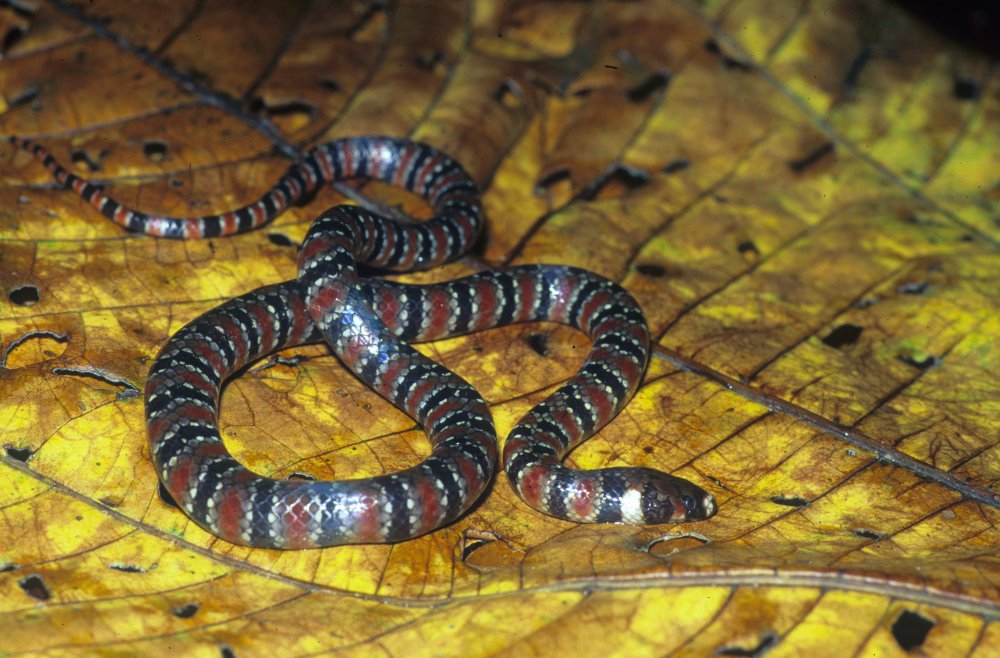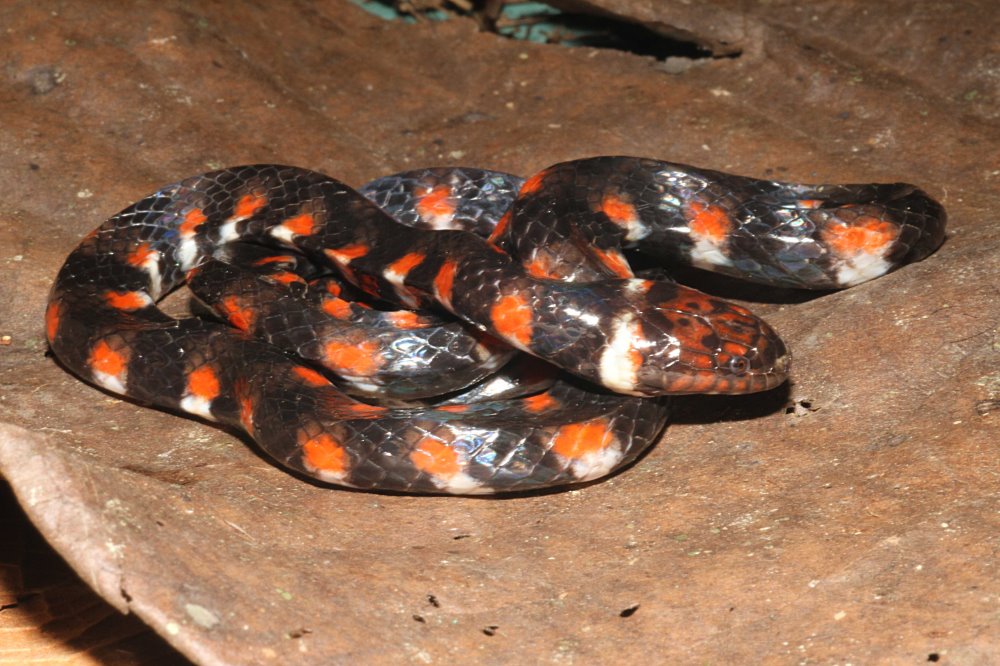
Hydrops martii has narrow, prominent bands.
The theme of red, black, and yellow (or white) bands/rings is not uncommon among Amazonian snakes. Not only are there a number of coral snake species that bear those familiar colors (although not in the sequence that we in the USA are familiar with), but there are a number of harmless and rear-fanged taxa so clad. Two of the latter are the primarily aquatic coral mud snakes, the broad banded
Hydrops triangularis bassleri and the narrow banded
Hydrops martii.
Like most Amazonian snakes, the 2 taxa of mud snakes are everywhere but nowhere. If you search specifically for them you will almost certainly fail. But the, if you’re out looking for aquarium fish or Amazonian water snakes (Helicops sp.) at night you just may luck onto a Hydrops. That’s just the way the Amazon works.
And so one rainy night we decided to look for caiman on an Amazon tributary. A half dozen of us clambered aboard a small boat and off we went. A half hour later we found a hatchling spectacled caiman, but we didn’t know that at the time. We did know that we found a big, and very unexpected,
Hydrops martii that had obviously just consumed a huge meal. Not wanting to try for pix in the rain, we bagged the snake and returned to camp where we would then photograph the snake and return it to where it had been found. Good plan. Photogenic snake.
But when we opened the bag we had not only the pretty snake but with it was a hatchling caiman—regurgitated, sticky, but apparently none-the-worse for its harrowing experience. We made note of the before then unknown food item then turned both loose.
And as far as the other Hydrops species,
H. triangularis bassleri, is concerned, one night during a pelting rain, I walked, as I had done 100 times before, from my cabin to the edge of the little oxbow a few dozen yards away. There in the shallows lay a
bassleri, the first and only one I had/have ever seen in the wild. Go figure.
The flattened head of
Hydrops martii is hardly wider than the neck.

The young of both coral mud snake species are more brightly colored than the adults. This is the broad banded
Hydrops triangularis bassleri.




